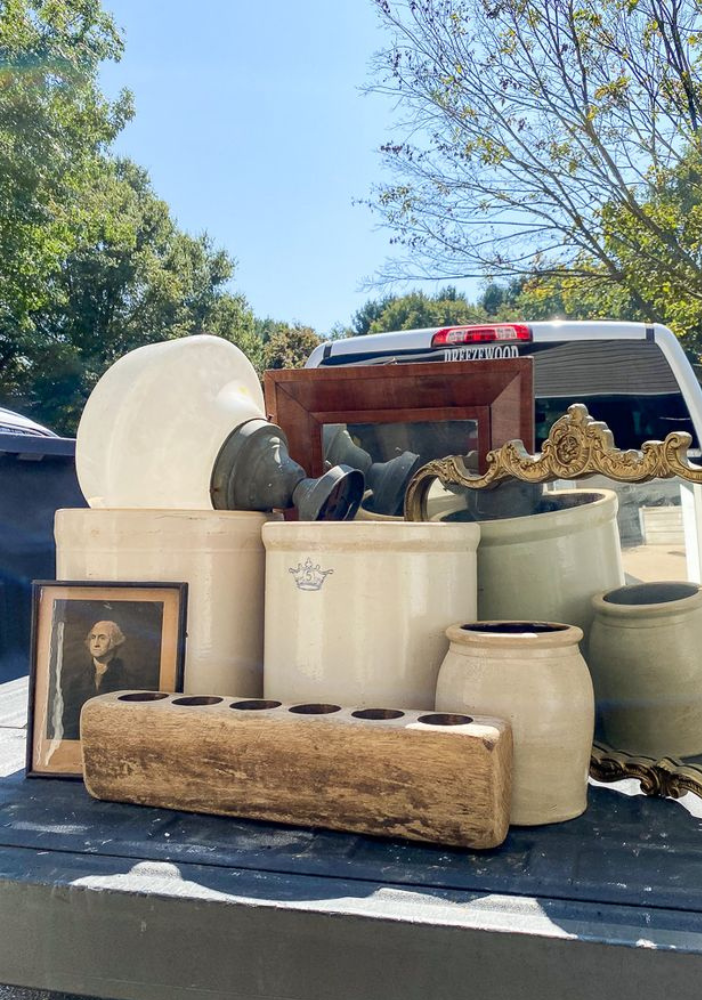weekly design inspiration: vintage voyage
There’s something magical about walking into a thrift store or flea market and spotting a hidden gem—a vintage lamp that fits perfectly into your home, a dresser that transforms your bedroom, or a delicate piece of antique pottery that holds a story. But thrifting for vintage and antique items isn’t just about luck; it’s a skill that requires patience, strategy, and a keen eye.
Today, I’ll take you through my tried-and-true process for thrifting, share tips for spotting valuable pieces, and explain how to make sure what you buy is worth the investment. Whether you’re a seasoned thrifter or just starting out, these steps will help you navigate the world of vintage finds like a pro.
thrift wisely
Before heading out start with some research. Browse online resources like Pinterest, Instagram, or interior design blogs to identify the type of pieces that catch your eye. Are you looking for mid-century modern furniture, 1970s glassware, or Victorian-era decor? Having a mental (or physical!) list will help you stay focused and avoid getting overwhelmed.
Next, set your intention: Are you looking for something specific, like a statement mirror or a set of chairs, or are you just open to serendipitous finds? Knowing your intention allows you to strike a balance between being selective and staying open to unexpected treasures.
curated crawl
Not all thrift stores and antique shops are created equal. Spend some time researching your local area and consider expanding your hunt to nearby towns, especially affluent neighbourhoods, which tend to have higher-quality items.
timely treasures
Timing is everything in thrifting. For thrift stores, I’ve found that mid-week mornings are the best times to go—weekends can be crowded, and inventory is often picked over. Estate sales are usually best on their opening day if you’re after high-demand items, but if you’re hunting for deals, check back on the last day when sellers are more likely to slash prices.
For flea markets and garage sales, aim to arrive as early as possible if you’re looking for specific pieces. But if you’re in a bargaining mood, show up an hour or so before closing. Sellers may be willing to negotiate more to avoid packing up unsold items.
quality quest
Thrift stores can be chaotic, with items piled high and scattered around. That’s why having a sharp eye is key. Here’s what I look for:
Quality Materials: Real wood, solid brass, cast iron, and crystal are signs of quality. Examine the weight of an item—heavier generally means better materials.
Joinery and Construction: For furniture, look for dovetail joints in drawers and solid wood backs and bottoms. Avoid particle board or staples, as they’re usually signs of lower-quality, mass-produced pieces.
Original Hardware: Pay attention to the knobs, pulls, and other hardware. Originals can add character and value, while replacements may hint at a less valuable restoration.
Patina and Age: Patina is your friend. Authentic wear, like the gentle fading of wood or the tarnish on brass, adds to the character of the piece. If it looks too pristine, it might be a reproduction.
Maker’s Marks: Check for maker’s marks, labels, or signatures. These can help you verify the authenticity and era of the item.
Source: French Art Shop
Source: Shabby French Vintage
measure twice, thrift once
Before buying larger pieces like furniture, make sure you’ve taken measurements of your space and have a rough idea of where the item will go. I recommend bringing a small measuring tape, a notebook, and photos of your rooms to visualize how the piece will fit into your home.
Source: The Goodman House
Source: Salina Maria Home
Design Tip: My most important tip is to trust your gut. If a piece speaks to you, don’t overthink it. Thrifting is all about the joy of discovery and making your space reflect your personality. If you love it, it’s worth it—even if it’s a bit outside your original vision.









